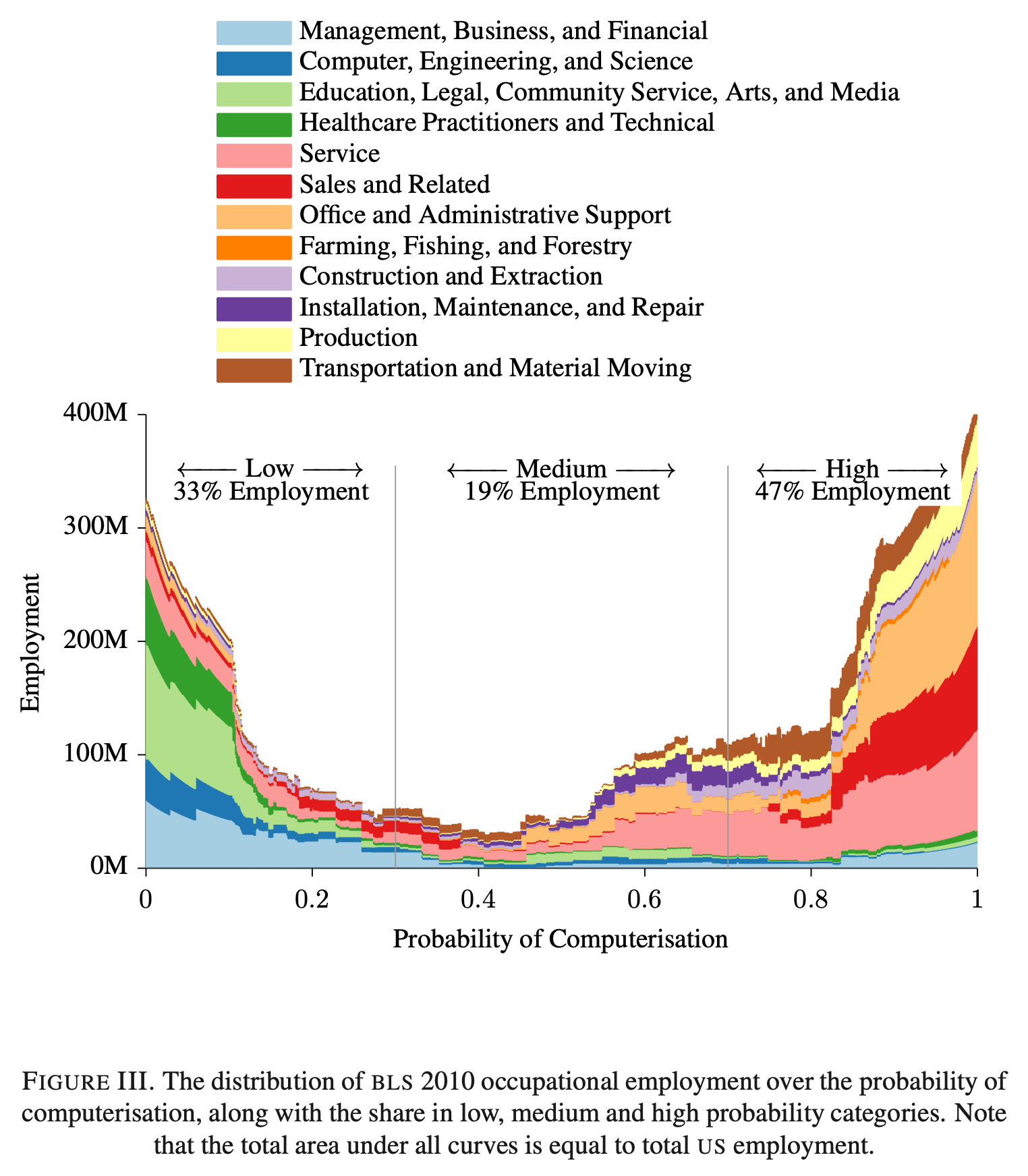Accountants & Retail Employees: Look Out
Whether or not AI eats your job has to do with three bottlenecks: Perception & Manipulation; Creative Intelligence; Social Intelligence.


There will still be jobs. Even Mr Frey and Mr Osborne, whose research speaks of 47% of job categories being open to automation within two decades, accept that some jobs—especially those currently associated with high levels of education and high wages—will survive (see table). Tyler Cowen, an economist at George Mason University and a much-read blogger, writes in his most recent book, “Average is Over”, that rich economies seem to be bifurcating into a small group of workers with skills highly complementary with machine intelligence, for whom he has high hopes, and the rest, for whom not so much.
I refer to this a lot. Worth keeping handy.
The onrushing wave
Previous technological innovation has always delivered more long-run employment, not less. But things can change

Also, here’s the original research. Start on page 57 for a full breakdown of every job you can think of and its “likelihood of computerization.”
The researchers used three computerization bottlenecks, each of which is broken down into constituent parts:
Perception and Manipulation
- Finger Dexterity: The ability to make precisely coordinated movements of the fingers of one or both hands to grasp, manipulate, or assemble very small objects.
- Manual Dexterity: The ability to quickly move your hand, your hand together with your arm, or your two hands to grasp, manipulate, or assemble objects.
- Cramped Work Space, Awkward Positions: How often does this job require working in cramped work spaces that requires getting into awkward positions?
Creative Intelligence
- Originality: The ability to come up with unusual or clever ideas about a given topic or situation, or to develop creative ways to solve a problem.
- Fine Arts: Knowledge of theory and techniques required to compose, produce, and perform works of music, dance, visual arts, drama, and sculpture.
Social Intelligence
- Social Perceptiveness: Being aware of others’ reactions and understanding why they react as they do.
- Negotiation: Bringing others together and trying to reconcile differences.
- Persuasion: Persuading others to change their minds or behavior.
- Assisting and Caring for Others: Providing personal assistance, medical attention, emotional support, or other personal care to others such as coworkers, customers, or patients.
Generally, if you have more checkmarks in each of the three bottlenecks, your job is less likely to be computerized.


Comments